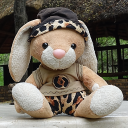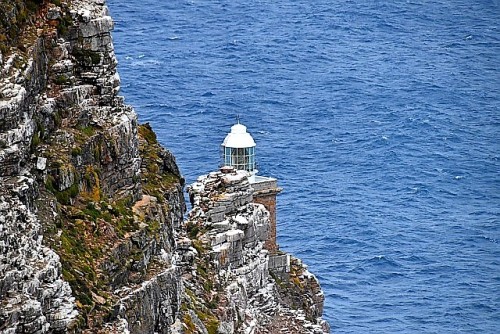
1575 posts
The Living Museum Of The Damara Close To Twyfelfontein Is The First Traditional Damara Project In Namibia
The Living Museum of the Damara close to Twyfelfontein is the first traditional Damara project in Namibia and the only one of its kind. The possibility to experience the traditional Damara culture in this form exists nowhere else in Namibia or in the world. Their original culture was a mixture of an archaic hunter-gatherer culture and herders of cattle, goats and sheep.
Within the framework of the Living Museum of the Damara an attempt was made to reconstruct the ‚lost culture’ of the Damara. Here the visitors have the unique opportunity to get to know the fascinating traditional culture of the Damara, thus contributing to the preservation of the culture as well as to a regular income for the Damara community that built the museum.
--------------------------
Das Lebende Museum der Damara in der Nähe von Twyfelfontein ist das erste traditionelle Damara - Projekt in Namibia und das Einzige seiner Art. Nirgendwo anders hat man die Möglichkeit in dieser Form etwas über die traditionelle Kultur der Damara zu erfahren. Ihre ursprüngliche jahrhundertalte Kultur war eine Mischung von archaischer Jäger- und Sammlerkultur und der Viehzucht von Rindern, Ziegen und Schafen.
Die Besucher haben dort die einzigartige Möglichkeit, die faszinierende traditionelle Kultur der Damara kennen zulernen um so einerseits zu deren Erhalt beizutragen und andererseits der Community der Damara die das Lebende Museum aufbauten zu einem geregelten Einkommen zu verhelfen.














-
 logi1974 liked this · 2 years ago
logi1974 liked this · 2 years ago
More Posts from Logi1974

Swakopmund offers many touristic attractions like splendid buildings, a wonderful town promenade, the aquarium and many more. The nearby surroundings are also of touristic importance. Especially the coastal road which is flanked by dunes on the one side and by the Atlantic Ocean on the other is very impressive. Excursions can be made 30 km south to Walvis Bay, as well as up north to the fishing paradise of Henties Bay or to Cape Cross to one of the world largest seal colonies.
-----------------
Swakopmund bietet viele touristische Reize, zu erwähnen sind nicht nur prächtige Gebäude, sondern auch die herrliche Strandpromenade, das Aquarium und vieles mehr. Von besonderer touristischer Bedeutung ist auch die weitere Umgebung. Besonders die Küstenstraße, die auf der einen Seite vom Atlantik und auf der gegenüberliegenden Seite von hohen Sanddünen begrenzt ist, hinterlässt unvergessliche Eindrücke. Ausflüge kann man unternehmen 30 km südlich nach Walfish Bay, sowie nördlich zum Anglerparadies Henties Bay oder nach Cape Cross zu einer der weltgrößten Robbenkolonien sind lohnenswerte Ziele.

















Is Cape Point the southernmost point of Africa? The southernmost point in Africa is Cape Agulhas, about 150 km further to the south-east. For the early seafarers, however, the Cape was the turning point for their great voyages towards India. Only when you had passed this "Cape of Storms", as Bartalomeu Dias called it in 1488, could you speak of a successful crossing. The Cape of Good Hope on the Cape Peninsula south of Cape Town is one of the most magical places in the world.
----------------------------
Ist das Cape Point der südlichster Punkt von Afrika? Der südlichste Punkt Afrikas ist das ca. 150 km weiter, in südöstlicher Richtung befindliche Cape Agulhas. Für die früheren Seefahrer war jedoch das Kap der Wendepunkt für ihre großen Seefahrten Richtung Indien. Erst wenn man dieses “Kap der Stürme”, wie Bartalomeu Dias es 1488 nannte, passiert hatte, konnte man von einer erfolgreichen Passierung sprechen. Das Kap der guten Hoffnung auf der Kaphalbinsel südlich von Kapstadt zählt zu den magischsten Plätzen der Welt.














Africa is a world of its own. A lot of travelers may only think of some top destinations like Cape Town when thinking about the continent, but there’s so many different cultures, developed from each country’s history, and natural beauty that you can’t believe until you see it. There’s an adventure waiting for you on the continent of Africa, especially the beautiful country of South Africa.
———————————————
Afrika ist eine Welt für sich. Viele Reisende denken vielleicht nur an einige Top-Reiseziele, wie Kapstadt, wenn sie über den Kontinent nachdenken. Aber es gibt so viele verschiedene Kulturen, die sich aus der Geschichte jedes Landes und der natürlichen Schönheit entwickelt haben, dass sie es erst glauben können, wenn sie es sehen. Auf dem afrikanischen Kontinent wartet ein Abenteuer auf jedermann, insbesondere in dem wunderschönen Land Südafrika.












